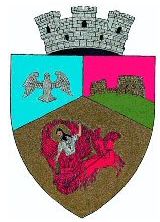Bocșa: Difference between revisions
Knorrepoes (talk | contribs) m (Text replacement - "↵↵''' {{uc:" to "''' {{uc:") |
Knorrepoes (talk | contribs) m (Text replacement - "{{ro}}'''" to "'''") |
||
| (One intermediate revision by the same user not shown) | |||
| Line 1: | Line 1: | ||
''' {{uc:{{PAGENAME}}}} ''' | |||
District/county (județ) : [[Caraș-Severin (county)|Caraș-Severin]] | District/county (județ) : [[Caraș-Severin (county)|Caraș-Severin]] | ||
| Line 17: | Line 17: | ||
The mural crown with three crenellated towers means that the town has the status of a city. | The mural crown with three crenellated towers means that the town has the status of a city. | ||
{{media}} | {{media}}'''[[Literature]]''': image from the decree 408/2005 | ||
'''[[Literature]]''': image from the decree 408/2005 | |||
[[Category:Romanian Municipalities B]] | [[Category:Romanian Municipalities B]] | ||
[[Category:Caraș-Severin]] | [[Category:Caraș-Severin]] | ||
[[Category:Granted 2005]] | [[Category:Granted 2005]] | ||
Revision as of 13:22, 11 February 2024
BOCȘA
District/county (județ) : Caraș-Severin
Official blazon
Un scut triunghiular cu marginile rotunjite, împărțit în furcă răsturnată. În prima partiție, în câmp albastru, se află un porumbel de argint, aflat în zbor, văzut din față. În a doua partiție, în câmp roșu, se află o terasă vălurită verde, și un pinten de cetate în ruină, având în partea centrală contraforturi și o arcadă, totul fiind de aur. În a treia partiție, în câmp aurit, se află un car de foc, tras de trei cai, totul de culoare roșie. În car este un personaj în culori naturale, nimbat cu aur, cu veșmânt de argint. El ține în mâna dreaptă un mănunchi de săgeți de aur, iar mâna stângă stă ridicată. Scutul este trimbrat de o coroană murală de argint cu trei turnuri crenelate.
Origin/meaning
The arms were officially granted on May 5, 2005.
The pigeon symbolizes peace, love, harmony, hope, representative elements for the Turkish Edge, one of the fortified strategic points much disputed by the Habsburgs and Ottomans between the 16th and 18th centuries.
The character in the chariot of fire is one of the traditional iconographic representations of Saint Elijah, the patron of the monastery and the locality.
The mural crown with three crenellated towers means that the town has the status of a city.
Contact and Support
Partners:
Your logo here ?
Contact us
© since 1995, Heraldry of the World, Ralf Hartemink 
Index of the siteLiterature: image from the decree 408/2005










